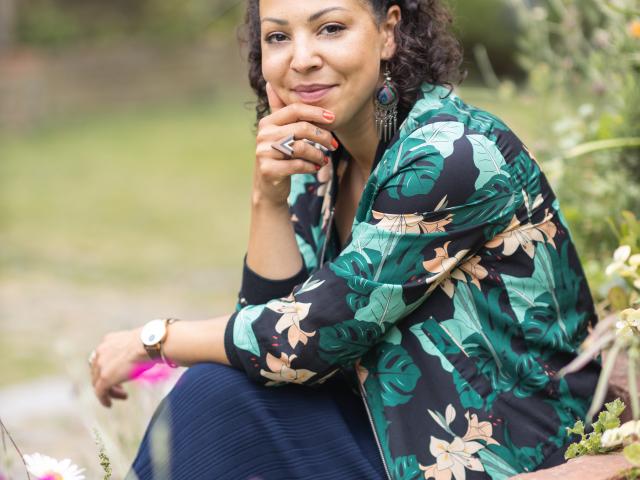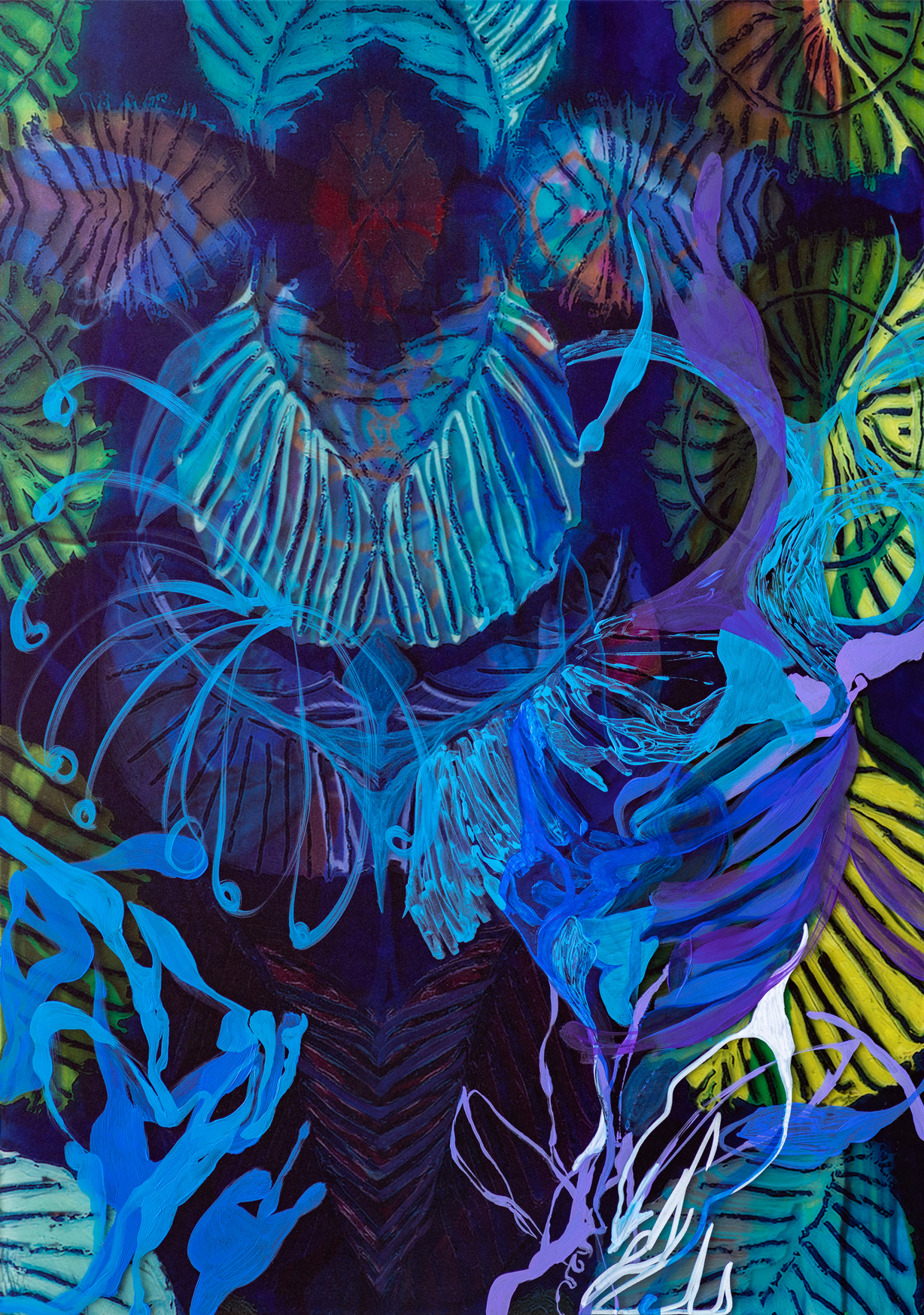YouTube Premiere
Please click the video above and set a reminder for the film premiere on Wednesday 26th October at 7pm. Please watch on YouTube and get involved with us via the comments box!
Bryony Benge-Abbott is an interdisciplinary artist working closely with scientists, activists and community groups to explore our relationship to the natural world. Her latest project, The Colour of Transformation, is partnered by Butterfly Conservation and the William Morris Gallery and shares new perspectives on nature inspired by the stories of Global Majority women pioneers working in conservation, natural history and the outdoors. In her blog, Bryony reflects on the need to hold public space for voices typically under-heard within the nature conservation sector.
The Colour of Transformation is just about ready to emerge from its chrysalis, having grown and evolved over the past year through multidisciplinary collaboration spanning science and spoken word poetry, to documentary and dance.
Where to watch
The Colour of Transformation documentary and artist’s film can be viewed in person (see details below) and a link will be posted here to view them on YouTube at 7:00 pm on Wednesday 26th October, and for seven days afterward.
Nine free screenings of The Colour of Transformation are taking place at Meanwhile Gardens in North Kensington on 27th - 29th October, from 6pm to 9pm.
Ticket booking link: https://www.eventbrite.co.uk/e/the-colour-of-transformation-tickets-411269146087
Get involved online
On Wednesday 26th October, we're hosting a number of online features in collaboration with Action for Conservation addressing the lack of visibility in conversations about the ecological crisis.
- 6.30pm - Live takeover of Butterfly Conservation Instagram channel by Action for Conservation.
- 7.00pm - Exclusive online premiere of The Colour of Transformation. Butterfly Conservation YouTube. Link will be posted on this page closer to the time.
- 8.00pm - Live takeover of Butterfly Conservation Instagram channel by Action for Conservation.
The film brings art and conservation together to offer an alternative approach to public engagement for a charity acutely aware of the need to broaden representation. The project began life as a conversation with Big City Butterflies about how to inspire a much broader audience in the charity’s work to protect butterflies and their habitats. I always find these questions fascinating. Why should those who are underrepresented feel any sense of loyalty or belonging to any movement in which their voices and experiences are marginalised? When you do not see yourself reflected in the stories, systems and structures that define and lead established campaigns to save the natural world, how do you find your place within them?
The environmental movement has a huge diversity problem that urgently needs addressing; only by genuinely listening to a wide range of perspectives, experiences and ideas are we going to effectively respond to the ever-growing nature crisis. Yet in the UK the majority of Black and people of colour live in urban areas and are less likely to have access to green space than those who identify as white. They are also hugely underrepresented within the nature conservation sector. Earlier this month Natural England and Wildlife and Countryside Link released a report showing that just 4.81% of professionals identify as Black, Asian or from other minority ethnic groups, compared to 12.64% across all UK professions. The report also showed evidence that people of colour within the sector experience racism in the form of stereotyping, discrimination, exclusion from networking and mentorship and a lack of opportunity for progression. And while 84% of organisations are willing to take action to address these issues, only lack 4% of organisations have a plan and are regularly implementing it. There are myriad barriers for Black and people of colour to participate in these movements, some of them obvious, others more subtle. It takes great courage to not only step into such spaces as a minority but to also seek to create change within systems that have a history of exclusion.

As a UK-based British-Trinidadian artist whose work focuses on our relationship to the natural world, I am often the only brown face around the table. My awareness of this has only grown as my work has moved ever more into the public realm, particularly in my street art practice. The colour of my skin has proven to be a curiosity to many, a threat to a (vocal) few, and an inspiration to a number of younger girls in particular. I have had some incredibly moving conversations with next generation artist-activists in recent years, and this has made me realise that there is a power to my visibility as a woman of colour working in the space where art and science meet. This hasn’t been a comfortable experience, but it has been powerful. While my practice is driven by my love of nature and a desire to illuminate our interconnectedness to the natural world, I cannot escape the fact that when I stand next to my art the tone of my skin colours how some people interact with it. I also learned from an early age that some folk out there do not believe that those who look like me ‘belong’ in the British landscape.
In creating The Colour of Transformation, I wanted to look at the aforementioned ‘diversity problem’ from the perspective of those who are working from the grassroots to empower people of colour to engage with the natural world on their own terms, in ways that feel authentic, inclusive and safe. From hiking to writing, the film brings together seven Global Majority women who are pioneering in the fields of nature conservation, natural history and the outdoors. The narrative loosely follows the stages of butterfly metamorphosis, with each of the women reflecting on their own personal journeys of change as they moved into positions of leadership to create new communities, campaigns and narratives. Their stories illuminate some of the belief systems and stereotypes that they have had to challenge and release in the process of transformation, and they speak openly about their experiences of taking up space and becoming more visible in the public eye. They also share how they nourished and protected themselves throughout the process, offering advice to the next generation of change-makers - particularly young people of colour.
By projecting the film onto the side of a four-story building inside a community garden in west London, The Colour of Transformation unapologetically holds public space for voices typically under-heard and overlooked within the nature sector. Tucked inside a pocket of green oasis surrounded by concrete and brick, the invitation for audiences is to step into space for re-visioning; untangling and weeding out any patterns and narratives that are preventing our whole selves from connecting to the natural world.
Ultimately, The Colour of Transformation is an exploration of the fundamental question of what it means to be human in the midst of an ecological crisis. The journey to creating the world we want to live in begins inside each of us, in the dreams and the stories we tell ourselves. While The Colour of Transformation has been created by and for those whose voices and perspectives are largely marginalised in ecosystem change policy discussions and decision-making, it is also a call for everyone to recognise the truth that the natural world is as much ours as it is anyone else’s. We all belong. We are all nature, and it is now time to take control of our own narratives as we strengthen our relationship with the natural world and move to protect it, together.
More Information
Bryony Benge-Abbott
@BryonyBA (twitter)
@Bryonybengeabbott (instagram)
Film website: https://bryonybengeabbott.com/thecolouroftransformation
Big City Butterflies is a London-based Butterfly Conservation project made possible thanks to funding from the National Lottery Heritage Fund. You can sign up to the project newsletter here: Big City Butterflies enews | Butterfly Conservation (butterfly-conservation.org)
@BigCButterflies (twitter)
@bigcitybutterflies (Instagram)


